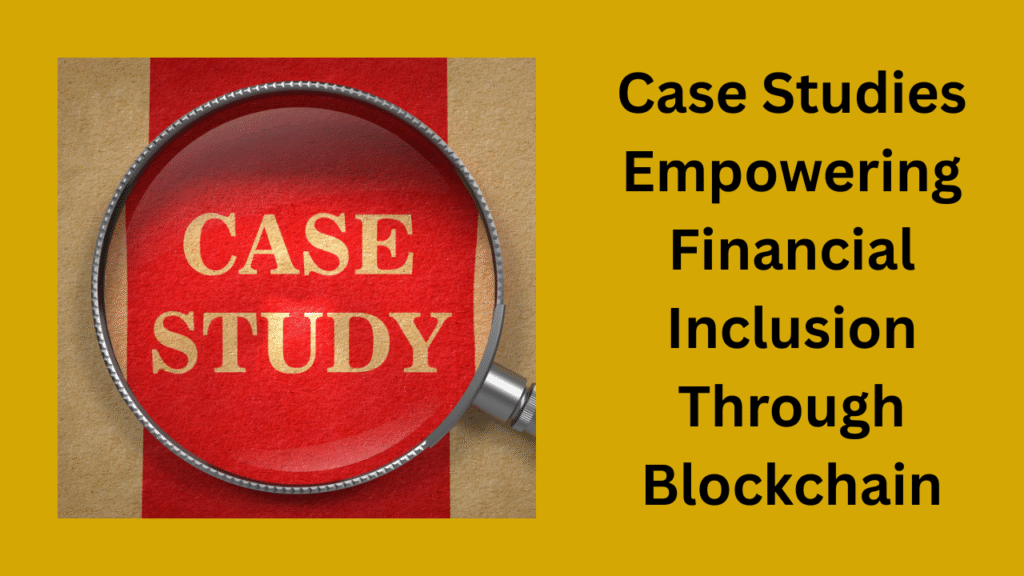In a world where access to banking services often defines the line between financial empowerment and economic exclusion, blockchain technology emerges as a beacon of hope. With decentralized finance (DeFi) and blockchain, the vision of financial inclusion is no longer a distant dream but a rapidly evolving reality. By offering equitable financial tools to underserved communities, blockchain is transforming the way we approach global economic disparities. Let’s delve deeper into how blockchain is leading this charge and why its revolutionary impact is crucial for the future.
The Need for Financial Inclusion
Financial inclusion refers to providing affordable access to financial services like banking, credit, and insurance to individuals who lack these resources. According to the World Bank, around 1.4 billion adults globally remain unbanked, with limited or no access to traditional banking opportunities. This lack of access hinders opportunities for education, entrepreneurship, and economic stability, perpetuating cycles of poverty.
Add CalloutBox: [callout_box content=“📢 1.4 billion adults worldwide remain unbanked (World Bank). #Web3 offers a solution for financial inclusion, breaking down barriers & empowering individuals.#DeFi #FinancialInclusion #Web3Wonders.US.US”]
Traditional financial institutions often fail to serve low-income groups due to high operational costs, lack of proper identification, and the absence of physical infrastructure in remote areas. Blockchain technology steps in here to bridge the gap.
The Role of Blockchain in Financial Inclusion
Blockchain, the underlying technology behind cryptocurrencies like Bitcoin, Cardano, Ethereum, and XRP is a decentralized ledger that records transactions securely and transparently. Its decentralized nature eliminates the need for intermediaries such as banks, reducing costs and making financial services accessible to everyone, regardless of geographical or economic barriers.
Here’s how blockchain empowers financial inclusion:
1. Decentralized Finance (DeFi)
DeFi platforms operate on blockchain networks and provide financial services such as lending, borrowing, and saving without the need for traditional banking. For instance, platforms like Aave (Agave runs on the Ethereal blockchain) and Compound (Compound is built on the on the application layer or dApps) and Compound allows users to earn interest on their assets or secure loans, all via smart contracts—automated agreements that execute when predefined conditions are met.
These platforms are accessible to anyone with an internet connection and a digital wallet, ensuring even those in remote areas can participate in global financial systems.
2. Lower Transaction Costs
Blockchain significantly reduces transaction costs by removing intermediaries. For example, remittances—money sent home by migrant workers—often face hefty fees from traditional services like Western Union. Blockchain-based solutions like Stellar or Ripple offer near-instant and low-cost cross-border transactions, ensuring more money reaches the intended recipients.
3. Identity Solutions
Lack of proper identification is a significant barrier to financial inclusion. Blockchain-based digital identity solutions empower individuals to create tamper-proof records of their identity. Projects like uPort and Civic use blockchain to enable users to own and control their personal data, granting access to banking and other essential services.
🚫 Lack of ID = Locked out of banking.
🛡️ Blockchain-based digital IDs are changing that.
Projects like @uPort_me & @civickey let individuals own and control their identity—opening doors to financial services and beyond.
🔗 Empowerment through Web3.
#Web3 #DigitalID #FinancialInclusion #BlockchainForGood
4. Microfinance and Smart Contracts
Microfinance—small loans provided to low-income borrowers—has long been touted as a way to alleviate poverty. However, traditional microfinance institutions often charge high interest rates due to administrative costs. Blockchain can streamline this process using smart contracts, which automate loan disbursement and repayment, lowering costs and reducing risks.
Case Study: Blockchain in Action
Let’s examine a real-world example of blockchain driving financial inclusion:
Project: BitPesa BitPesa is a blockchain-powered payment platform that simplifies cross-border payments in Africa. Traditional banking systems in many African countries are underdeveloped, making international transfers expensive and time-consuming. BitPesa leverages blockchain to provide faster, cheaper transactions for businesses and individuals.
The platform has enabled small businesses to expand their operations by reducing the cost of importing goods. For instance, a small-scale retailer in Kenya can now source products from China at a fraction of the cost previously incurred through traditional banking systems.
Advantages of Blockchain-Driven Financial Inclusion
The benefits of blockchain for financial inclusion extend beyond cost reduction and accessibility. Here are some key advantages:
Transparency: Blockchain’s immutable ledger ensures all transactions are recorded transparently, reducing corruption and fraud.
Empowerment: By giving individuals control over their finances and identity, blockchain fosters economic independence.
Scalability: Blockchain solutions can scale to serve billions of users, making it a sustainable option for global financial inclusion efforts.
Challenges and Criticisms
While blockchain holds immense promise, it’s not without challenges:
- Technical Barriers Blockchain’s complexity can be intimidating for new users. Efforts are needed to create user-friendly interfaces and educate communities about its benefits.
- Regulatory Uncertainty Many governments are still grappling with how to regulate blockchain and cryptocurrencies. Unclear or restrictive regulations can hinder adoption.
- Access to Technology Blockchain relies on internet connectivity and digital devices. Ensuring access to these resources in underprivileged regions remains a hurdle.
Despite these challenges, the potential for blockchain to drive financial inclusion is undeniable.
Future Outlook
As blockchain technology matures, its role in financial inclusion will only grow. Innovations like Layer-2 solutions, which enhance scalability, and decentralized identity protocols are paving the way for even greater accessibility. Collaborations between blockchain startups, NGOs, and governments will be crucial in bringing these solutions to underserved communities.
For example, partnerships between platforms like Stellar and global aid organizations have already demonstrated the power of blockchain in streamlining humanitarian efforts. Expanding such initiatives will further solidify blockchain’s place as a cornerstone of financial inclusion.
Empowering Lives, One Block at a Time
Blockchain technology is not just a technological innovation; it’s a tool for empowerment. By breaking down traditional barriers, it provides a pathway for millions of unbanked individuals to participate in the global economy.
🌍 Blockchain isn’t just tech—it’s empowerment.
By breaking barriers, it opens the global economy to 1.4B unbanked. The future? Inclusive, accessible, and sustainable solutions.
Together, let’s build a world where financial inclusion is a right—not a privilege. #Web3 #BlockchainForGood #FinancialInclusion #DeFi
As we look to the future, the challenge lies in ensuring that blockchain solutions remain inclusive, accessible, and sustainable. Through continued innovation and collaboration, blockchain has the potential to transform not just financial systems but entire communities—one block at a time.
Together, we can build a world where financial inclusion is not a privilege but a right for all.
Empowering Lives, One Block at a Time
Blockchain technology is more than just an innovation—it’s a force for change. By breaking down traditional barriers, it offers millions of unbanked individuals a path to participate in the global economy and reshape their futures.
At Web3 Wonders, we’re committed to exploring and sharing the transformative power of blockchain and Web3. If you’re passionate about creating a more inclusive financial world or simply curious about the latest innovations in blockchain, subscribe to Web3Wonders.US. Together, we can uncover inspiring stories, practical insights, and cutting-edge ideas that pave the way for financial empowerment.
Join the Web3 movement today—because the future of finance starts now.

